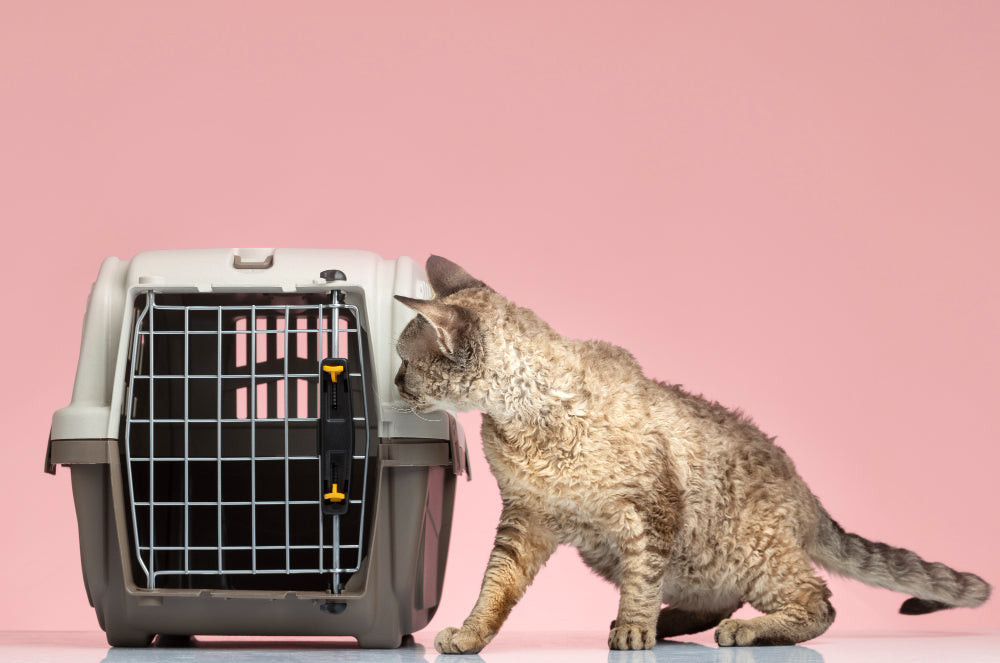
How to keep dog food fresh? Tips for home and on vacation.
, by Michael van Wassem, 4 min reading time

, by Michael van Wassem, 4 min reading time
Good nutrition is the foundation of a healthy dog. But even the best dog food loses its value if not stored properly. Fresh dog food smells pleasant, retains its crispiness, and ensures your dog gets what it needs: nutrients, taste, and a healthy digestion. Unfortunately, that freshness deteriorates faster than you think once you open a bag. In this blog, we explain why it's important to store dog food properly, how to tell if it's no longer fresh, and we give handy tips – including for when you're on vacation.
Dog food contains fats, proteins, and vitamins that are sensitive to air, heat, and light. As soon as you open a bag, oxygen comes into contact with the kibble. This can cause the fats to oxidize, leading to a musty smell and a bitter taste. Vitamins can also decrease, and the texture changes, causing even the hungriest dog to turn up its nose. Poorly stored food can also attract mold or pests.
Your dog often notices it first. Does he suddenly walk away from his food bowl, while he normally starts eating immediately? Then that's a possible sign. These signs also indicate reduced freshness:
An unusual odor (musty, rancid, or sour)
Lumps that feel soft or sticky.
Small black spots or mold
Itching, loose stools, or other health complaints
Want to be sure your dog food is of good quality? Always choose high-quality products, such as those on our dog food page . These are carefully formulated and suitable for long-term storage, provided you store them correctly.
As soon as you open a bag, the clock starts ticking. But with the right approach, the food stays fresh for weeks:
1. Seal the bag tightly.
Roll the bag tightly after use and close it with a clip or resealable strip. This limits exposure to air.
2. Store in a cool, dry place.
Avoid warm spaces such as a heated kitchen or shed in the summer. An ideal location is a cellar or pantry without temperature fluctuations.
3. Use a food container
A good food container is a smart investment. They are airtight, lightproof, and often come with a handy pouring spout or scoop. Note: keep the original bag in the container if you want to continue to see the expiration date. Some dog food enthusiasts pour the food directly into the container, but we only recommend this if you clean it regularly and seal the container well.
4. Avoid plastic bags and open containers
These do not offer sufficient protection against oxygen and pests. It is better to use specially designed containers for animal feed.
Storing dog food while traveling is a little more challenging. You have to deal with temperature fluctuations, limited space, and sometimes long journeys. However, it's entirely possible to keep your dog's food fresh while traveling.
Pre-portioning: Take portions with you in small, resealable containers or bags that you prepare for each day. This prevents you from having to open the large bag every time.
Use compact food containers: In our camping with your dog collection you'll find smart solutions for on the go, such as foldable food containers and lockable food bowls. Perfect for the camper van, tent or car.
Store in a cool, dry place: Do not leave the food in direct sunlight or next to the stove. Choose a shady spot in your camper or bring a small cooler bag for warmer days.
Only take what you need: Leave the rest of the bag at home in a food container. This way, the reserve food stays optimally fresh there.
It may seem like a small detail, but the way you store your dog food makes a big difference to your dog's health and enjoyment of their meals. With the right products, a little attention, and clever tools, you can keep the food fresh for weeks – whether you're at home or on an adventure in nature.
Want to be well-prepared for your trip? Check out our range of dry dog food, discover handy food containers, or take a look at everything for camping with your dog.
Do you have any questions or comments regarding this blog? Let us know!


